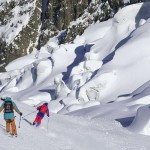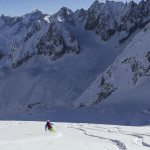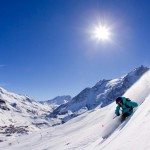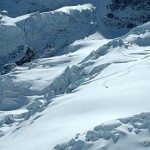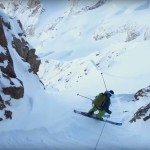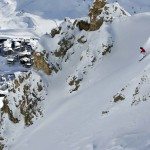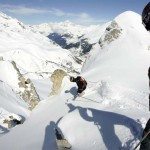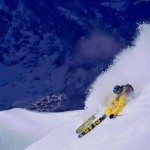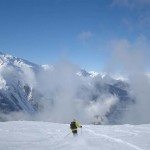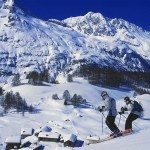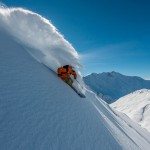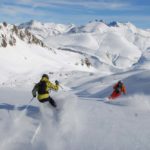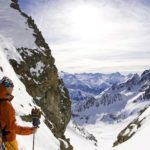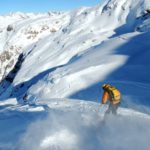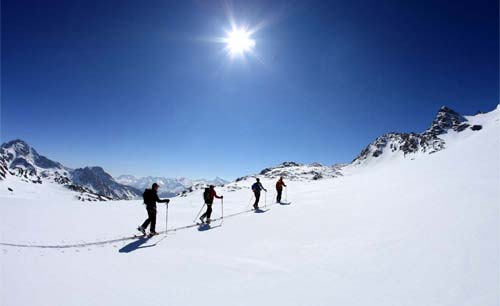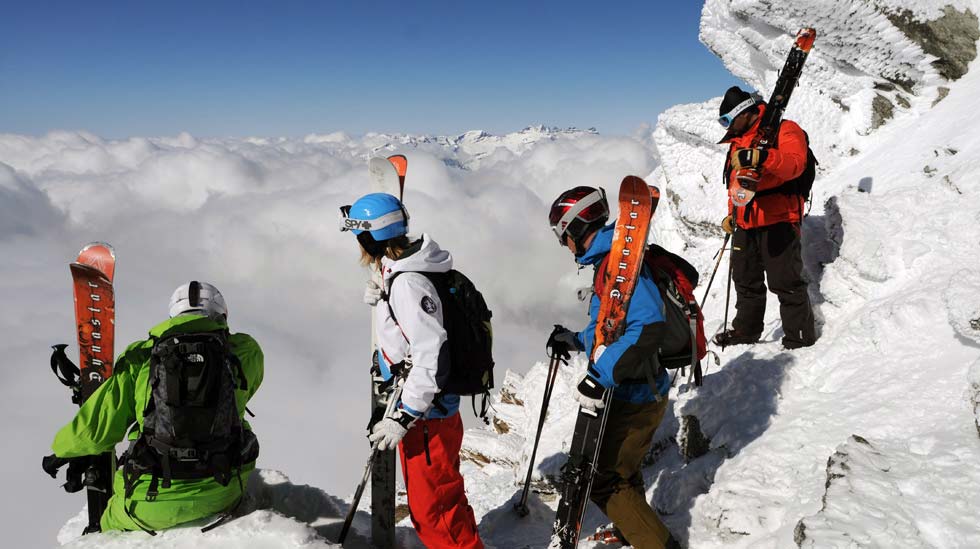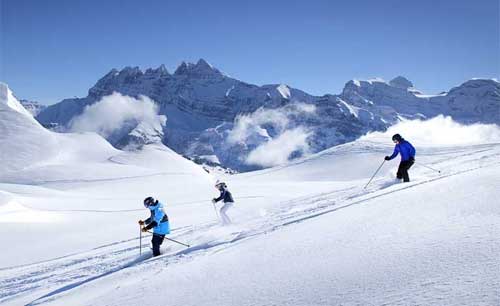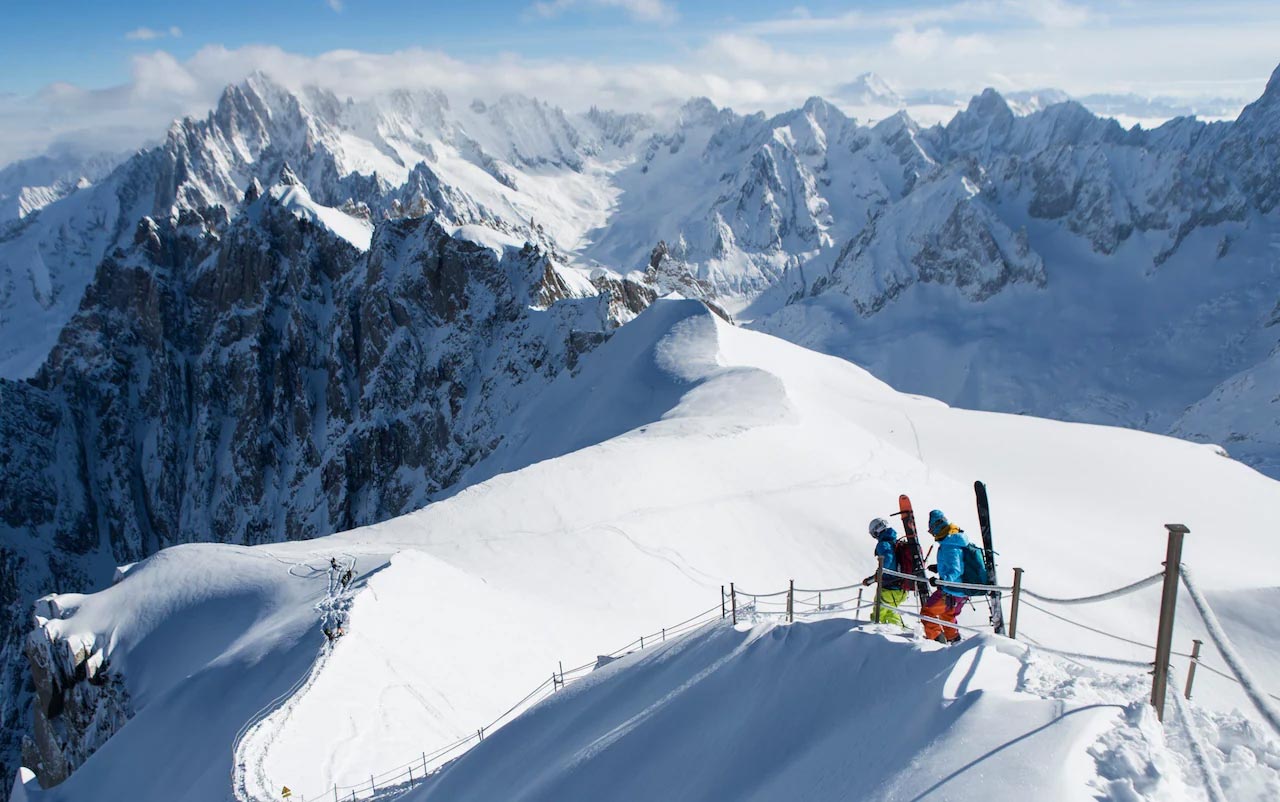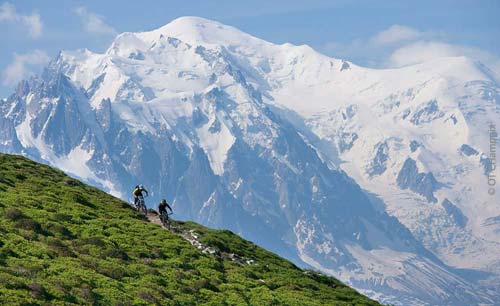Get away from the crowds and carve your own lines down some of the French Alps legendary off-piste runs. From Chamonix to the Tarentaise and Maurienne Valleys, here’s a roundup of the best lift-accessed off-piste skiing that should be on every powder hound’s bucket list.
French Alps Off-Piste Skiing Guide
Leave the boundaries of the groomed slopes and you enter a whole new world reserved for strong skiers with backcountry knowledge and a good level of fitness. The pay-off for reaching this level is the exhilaration you’ll feel when you carve fresh lines down a steep powder field. Add to that the thrill of feeling small in a big mountain arena and the satisfaction you get from pitching yourself against nature, and it’s easy to see why off-piste skiing is so popular.
If you’re a good recreational skier and you want to fast track to skiing powder, the best thing to do is hire an instructor for some one-on-one tuition. In the meantime, check out Tim Ferris’ 15 Tips for Learning to Ski Powder.
Once you get a taste for powder, the first thing you’ll look for in a ski resort is its off-piste potential. The access to great off-piste is better in some resorts than in others, and here we pull together some of the best lift-accessed off-piste skiing the French Alps has to offer.
Jump to:
Chamonix | La Grave | Tignes | Sainte Foy | Les Arcs | Alpe d’Huez | Val d’Isère | Les 3 Vallées
Book an Off-Piste Skiing Trip
Our Off-Piste Ski Guiding partners offer affordable one-day & multi-day packages designed for skiers and snowboarders looking for the best lift-accessed natural terrain in the French Alps. Take a guide, you’ll be safer and you’ll have a lot more fun.
Chamonix – technical freeskiing in big mountain terrain
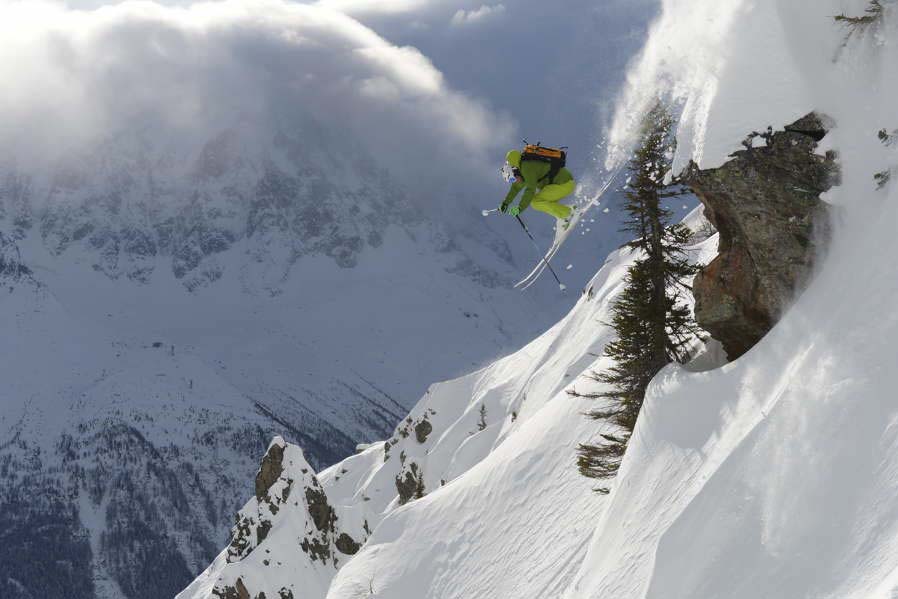
Local legend Aurélien Ducroz hits a drop in Brevent-Flegere, Chamonix | © Dan FERRER
Chamonix occupies a jaw-dropping setting at the foot of Mont Blanc and is renowned for its big mountain terrain and the steepest and most technical skiing in the French Alps. There’s huge scope for epic backcountry descents and off-piste skiers and freeriders flock here from all over the world. From backcountry glacier skiing in the Vallée Blanche to the classic Pas de Chèvre run in the Grands Montets, there are some outstanding descents and couloir runs made famous by local legend Aurélien Ducroz.
Les Grands Montets
The Grands Montets attracts hardcore helmet and harness wearing powder junkies whose technical backpacks are stuffed with avalanche rescue gear. You’ll see them testing their transceivers in the lift queue and it should give you an indication of what to expect. At 3300 m you step out into a high mountain domain overlooking the Argentière glacier with the mythical Aiguille Verte towering overhead. And with 2000 m of vertical drop between the lift station and Argentière town and north facing slopes that hug the snow and keep the powder light, there’s easy access to tons of exceptional, if challenging, off-piste. Warm up on the marked but ungroomed Point de Vue, and ask your guide to show you the renowned Pas de Chèvre.
The Vallée Blanche | Go >
The Vallée Blanche is a 23 km descent covering a massive 2800 m vertical drop from the Aiguille du Midi (3842 m) back to Chamonix (1050 m). If you’re in Chamonix and you’re a confident intermediate skier, this off-piste run is a must. It has everything; it’s exciting, the views are amazing, it’s challenging yet accessible, and although you’re just a cable car ride from the centre of Chamonix, you get that full-on backcountry expedition feel. In terms of features it has every type of skiing you could possible want: steeps, ice, powder, couloir. There are four main routes down the valley pitched at strong intermediate to expert skiers and you either need to be well-versed in crevasse rescue or you need to take a guide.
La Grave – untracked powder, glaciers and hair-raising drops
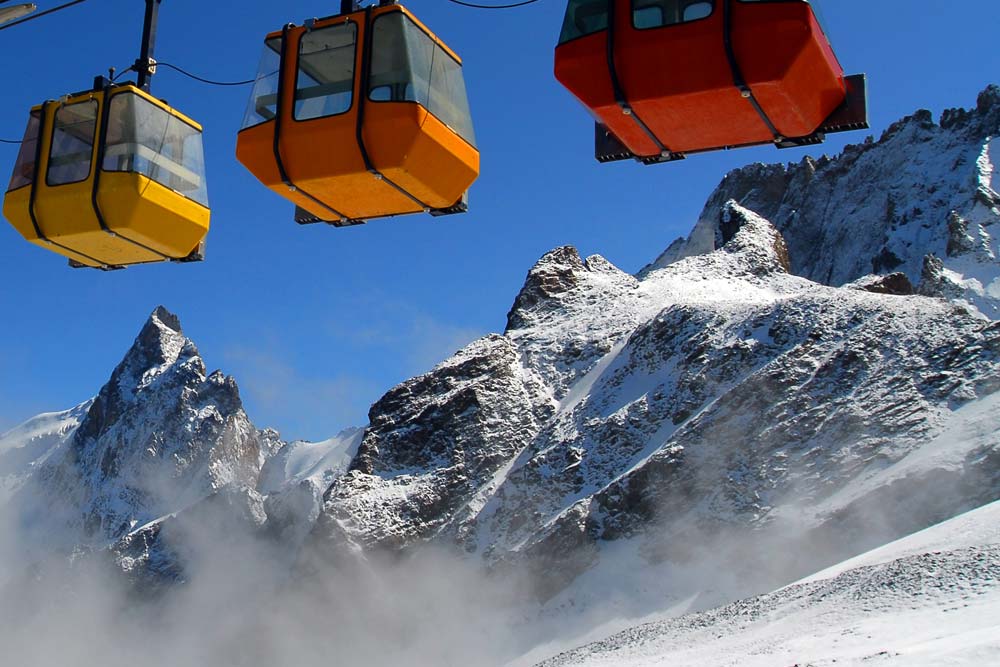
La Meije cable car and the jagged La Grave peaks | © D Le Guen
La Grave la Meije is home to some of the world’s most extreme off-piste terrain and the steep lines and deep powder are legendary amongst freeskiers. Located at the heart of the Oisans Massif in a high mountain setting that is both majestic and intimidating, La Grave attracts the best powder junkies from around the world. Veteran big mountain skier Ian McIntosh came here in 2014 to ski The Pan de Rideau and the “Y” couloir for his Behind The Line video series. Pro freeskier and guide, Joe Vallone, and Ptor Spricenieks came here in 2013 to film Epic TV’s Secret Stash.
Feeding La Grave’s fierce reputation, American big-mountain skier Doug Coombs died here in 2006 while trying to rescue his friend. The resort’s clearly not for everyone; there’s only one groomed piste, there’s no avalanche control and loads of gnarly glacial terrain. With one 2-stage gondola servicing 2100 metres of some of the heaviest lines many skiers will ever encounter, La Grave is a steep skier’s paradise. It’s up to you to carve out your own lines through the powder fields and steep couloirs. La Grave is a resort like no other and if you’re an advanced skier with a sense of adventure, you’ll have a blast.
Les Vallons de Chancel
This is the easiest off-piste descent in La Grave and a great first run to warm up the legs. Its accessibility means that the run can get tracked out pretty quickly, so you need to hit it early after fresh snow to get the best of the powder. The route starts at the 3200 m Col des Ruillans at the foot of the Girose gracier. A nice open descent flanking the Col du Lac leads into a narrow valley where the lifts are hidden from view and you get a great feeling of being out there in the wilderness. Drop down to the welcoming Chancel refuge which makes a convenient refreshment stop before hitting the narrow section through the forest. If there’s not enough snow low down you can catch the cable car at P1, otherwise continue through the trees to join the bottom section of Les Vallons de la Meije.
Les Vallons de la Meije
Les Vallons de la Meije is a steep and engaging off-piste run in the shadow of the majestic peaks of La Meije, Le Râteau and La Pointe Trifide. With over 2000 m of vertical drop, a top section that resembles a natural halfpipe and a north facing aspect that keeps the powder light, it’s not surprising that this is the most popular run in La Grave. Don’t let the popularity of the run let you underestimate how demanding it is. The gradient is fairly extreme until you reach Le Peyrou d’Amont lift station at 2400 m. From there, if conditions allow, you can continue down to La Grave through a narrow section that flanks the Meije and Tabuchet glaciers, or cut through the trees to the P1 pilon where you can catch the cable car back up.
Le Pan de Rideau
The Pan is the classic La Grave line and the run you have to do when you’re here. Don’t be under any illusions though, the Pan is one of the most challenging descents in these demanding mountains. The gondola takes you up to the pass at 3200 m, and you’re faced with a mix of glaciers, couloirs, open bowls, steep north faces, and knife-edge ridges. It’s a 30 minute hike under the unmistakable Le Rateau peak (3809 m) to The Pan drop in. It’s best to rope up here to access a 60 m traverse across a 45° slope. Then an open powder field gives you some room to link some turns keeping your speed under control. The second section over the Rateau Glacier is less steep, so you can light her up and carve out some glorious powder turns.
Tignes – world-class off-piste and a huge variety of terrain
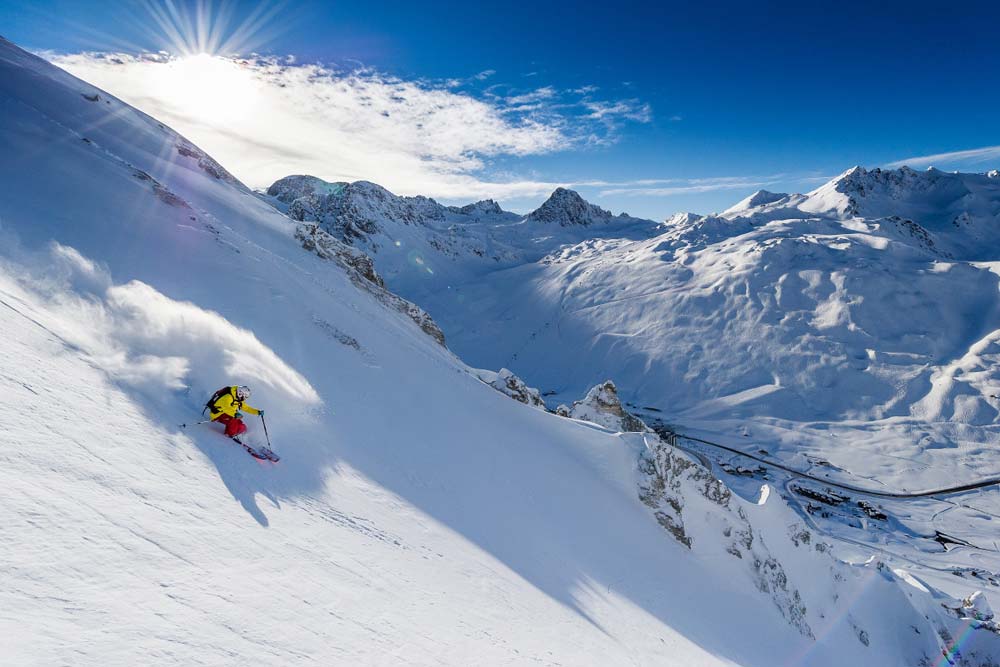
Easy access to some epic high-Alpine terrain | © andyparant.com
Tignes is a huge purpose-built resort in the Vanoise National Park with easy access to a vast amount of world-class off-piste terrain. The resort is one part of the massive Espace Killy ski area and links to Val d’Isère and the scope for lift accessed freeskiing or hut-to-hut ski touring is enormous. Home to backcountry pioneers such as Guerlain Chicherit or Marie Martinod who discovered many of Tignes’ classic off-piste descents, the resort also boasts 9 marked but ungroomed natural pistes that provide a great intro to off-piste skiing.
Guerlain Chicherit
Four times freeride world champion Guerlain Chicherit is such a legend in Tignes he has an off-piste ski route named after him! Needless to say, it’s the most challenging of the marked off-piste runs in the resort. To access the run, head to the Palet area from Val Claret and take the Col des Vés chair up to the Col. The run tracks under the chair and dissects the Pramecou black piste. In Val Claret, there are a number of other good off-piste runs also accessible from the Col des Vés chair. Check out the slopes between La Grande Balme and the blue Carline or over towards l’Aiguille Noire de Pramecou.
Le Couloir du Chardonnet
A favourite run among Tignes locals, the classic Couloir du Chardonnet is renowned for it’s steep powder couloir. Accessible from the Grattalu (2700 m) chair, it drops 500 m down to the Grand Huit chair. There’s a bit of a climb from the chairlift up to a rocky outcrop and the start of the run. The classic couloir, which carries some avalanche risk in heavy snow, is the easier of the two couloirs and therefore the quickest to get tracked out.
Sainte Foy – packs serious Alpine punch in the off-piste department
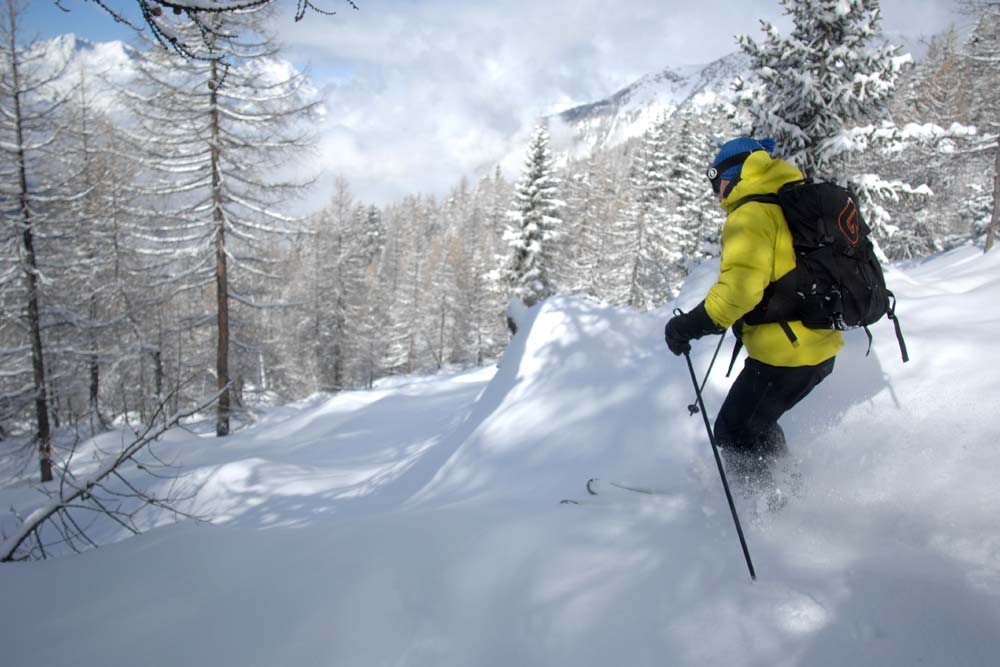
Powder days in the trees | © OT Sainte Foy
Sainte-Foy has a well earned reputation as a freeskiing hotspot and certainly punches well above its weight in the off-piste department given the size of the resort. You’ll spend your days skiing natural rollers, drops and powder runs through the trees. Because the mountains here are predominantly north-west facing, any powder tends to stay nice and light all day long. And, because it’s a quiet, uncrowded resort, powder doesn’t get tracked out in the first five minutes.
As with any resort, most off-piste slopes aren’t avalanche protected, and we advise to only venture off piste with a qualified mountain guide. You can find a guide at the Bureau des Guides Montagne de Haute-Tarentaise (+33 (0)6 14 62 90 24). For accommodation in Sainte-Foy, check out Premiere Neige or Auberge & Chalets sur la Montagne who also host off-piste and ski-touring ski courses throughout the season for beginners to advanced skiers. The whole mountain can be reached using the two main lifts and there are a ton of backcountry options, here are some of the best.
The north face of La Foglietta
If the weather’s good, there’s one run in Sainte Foy that is guaranteed to put a smile on your face – the north face of La Foglietta. Accessible from the Col de l’Aiguille, it’s a short traverse followed by a 45 minute hike up to the start of the run. Your efforts are rewarded with a 1700 m floaty off-piste descent down to the village of Mazure. Those not wanting to hike can miss the first, steepest pitch and traverse in from the top of the Marquise chair. As it’s a North-facing slope the snow stays in good condition longer as you don’t get the freeze-thaw crust that you get on sunnier slopes. This is off-piste skiing at its best, but although you can see the whole run from the lift it’s essential that you carry a full avalanche rescue kit, and ideally take a guide.
Shaper’s Paradise
Shaper’s is a great introduction to off-piste skiing in Sainte Foy. 250 m vertical drop and occupying a central location half-way down the Plan des Veaux red, this is the easiest of the three designated off-piste areas. You’ll find plenty of natural jumps, a natural half-pipe and and a steep section towards the bottom, and if you access the zone from a bit further up the Plan des Veaux piste you can ski some nice steeps and rock drops. The poles mark out a superb run through the middle of the area which spits you out on the Combe des Veaux red, ready for another lap on the Aiguille lift.
Le Monal
For that wilderness backcountry feel, it’s hard to beat Le Monal. From the top of the Aiguille chair it’s a long and fairly gentle off-piste run that brings you to the Valon du Clou and then down to the deserted hamlet of Le Monal. From here you can either return to Sainte Foy via a long flat route, or continue on to the road up to Val d’Isere. You can access longer, steeper runs by hiking up the ridge from the Aiguille chair and dropping in from higher up. Although Le Monal is fairly easy skiing, there’s always a risk of avalanche and as always the advice is to take a guide. Your guide will also coordinate with buses or arrange taxis back to the resort.
Les Arcs – big-mountain, open and snow-sure slopes
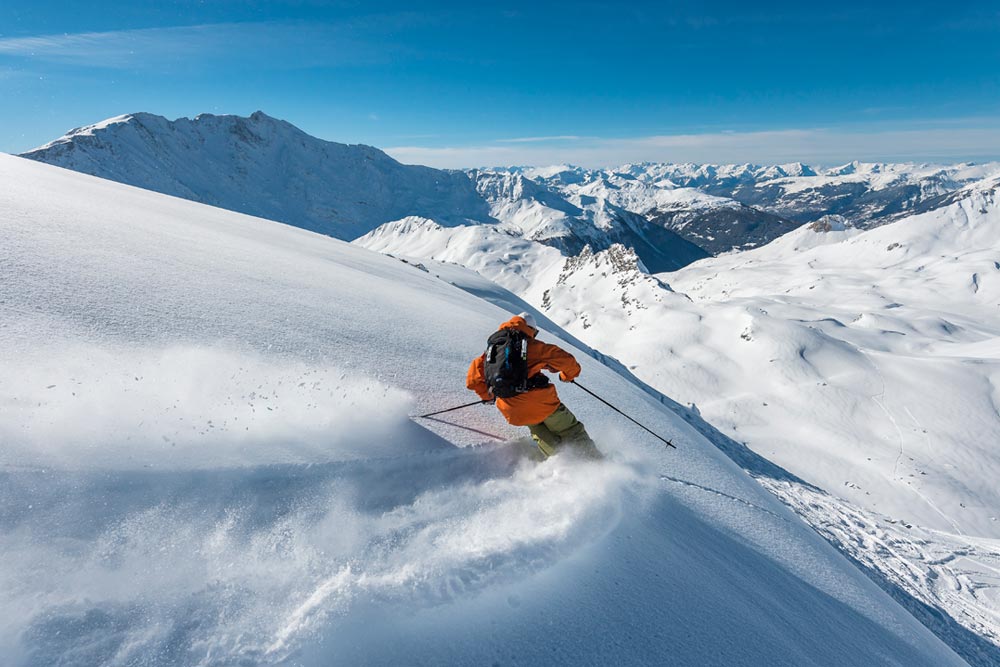
Epic high mountain off-piste in Les Arcs | © Tristan Shu – Les Arcs
Les Arcs is blessed with high-mountain north facing terrain meaning off-piste powder stays in good condition for longer and the opportunity for off-piste skiing is immense. The north face of the 3226 m Aiguille Rouge has some of the best off-piste in the Tarentaise with steep powder runs down to Villaroger at 1200 m. From the top of the Grand Col lift, 30 minutes of boot packing takes you to 2835 m and the start of some easier routes along the Turia Glacier to the village of Planay. The legendary Couloir en S is one of the most difficult runs in Les Arcs. Drop in from the Varet Glacier and ski 1800 m of vertical drop down to Planay.
If you’d rather stay within the relative safety of the resort, Les Arcs has a number of ‘Natur’ runs below the Aiguille Rouge, including Génépi, Crêtes and Robert Blanc, which are marked but ungroomed black runs. Their popularity means they tend to mogul quickly though. If you’re a fan of tree runs, the wooded slopes above Arc 1600 are super fun.
Aiguille Rouge
From Arc 1950 take the Varet 40 bubble followed by the Aiguille Rouge cable car to 3226 m. From there it’s a short climb up to the arete to the drop in to the steep pitches of north face known as Les Grandes Pentes, which run down to Villaroger. This side of the mountain is the reserve of expert skiers only; it’s steep, rocky, streaked with couloirs and has plenty of exposure to avalanche. An easier and more popular descent is the Grand Col accessible from the Grand Col chair lift. Climb to the ridge at 2835 metres and drop in to an epic off-piste run down to Villaroger.
Alpe d’Huez – Huge variety of high altitude terrain
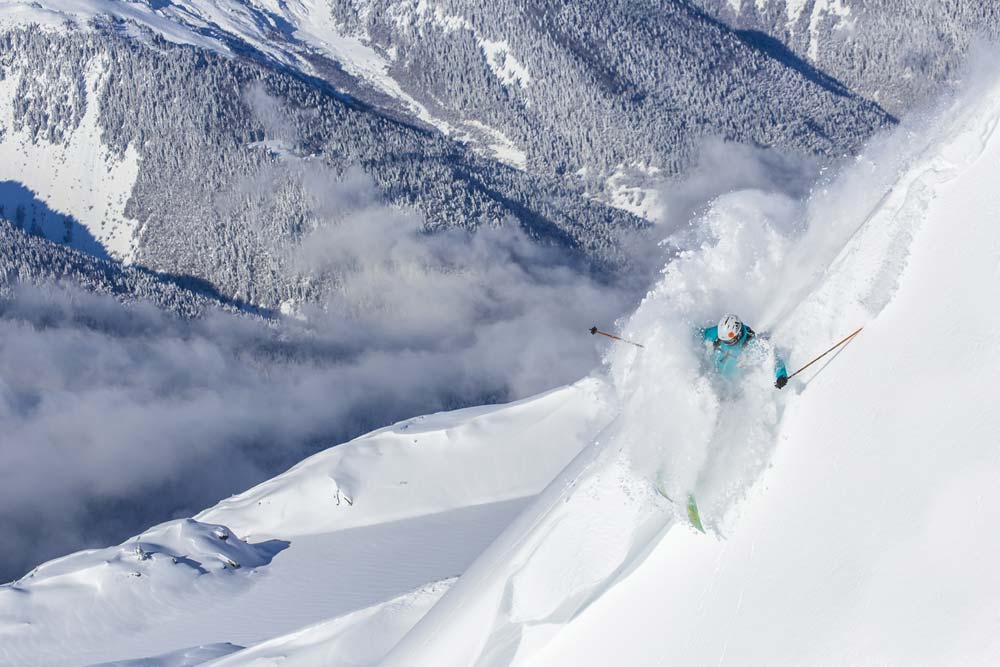
Steep and deep off-piste in Alpe d’Huez | © Laurent Salino | Alpe d’Huez Tourisme
You can’t see the 3300 m Pic Blanc from the village and as you ride the cable car and the full Alpe d’Huez range comes into view it’s a gut wrenching sight. The vast terrain that gets progressively steeper and more technical as you climb higher offers powder hounds unlimited possibilities. Snow sure, a fast modern lift system and 300 days sunshine a year, there’s a lot to like about Alpe d’Huez. Enough even to look past the ugly purpose-built village and lack of trees… There are 3 unmissable off-piste runs; Le Grand Sablat, Les Cheminées de Macle, and La combe du Loup.
Le Grand Sablat
This epic run starts from the Pic Blanc and descends down to Clavans in the Ferrand Valley. The terrain is wide open with nice undulating sections where you can confidently put in some big sweeping turns. From Clavans you can either bootpack up 400 m to the Col de Sarenne and drop back down into Alpe d’Huez, or you can take a taxi to Auris and jump on the lift back to the main resort.
Les Cheminées de Macle
This is steep, technical off-piste skiing at its most adventurous. These sheer couloirs are visible from across the resort, enticing expert skiers and boarders with their super narrow and near vertical channel of rock-fringed snow. To take this descent on, you need to have mastered jump turns and have your edges tuned to bite into the wind swept and often hard packed snow. The couloir is so narrow in places there’s barely enough room to get your skis round. Two thirds of the way down the couloir widens and you can execute a couple of wider turns before the run out at the bottom. Needless to say, this is the reserve of experienced steep-skiers only.
La Combe du Loup
This is an Alpe d’Huez classic descent. It can get busy, but don’t let that put you off, it’s far enough away from the main pistes that you still get that wilderness feel. The south facing slope gets full sun and you’ll often find great snow here when it’s icy elsewhere. The full run drops 1800 m down to the Col de Sarenne. Stop here for a well-earned lunch in the refuge and continue back to Alpe d’Huez via the Sarenne piste.
Please leave a comment below if you need specific advice for your French Alps Off-Piste Skiing trip, or if you have any recommendations to help us improve this guide. Happy holidays!

